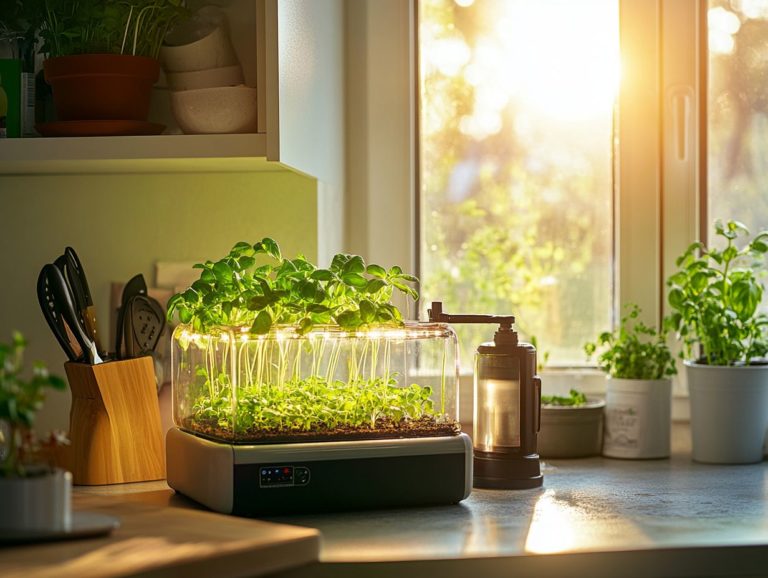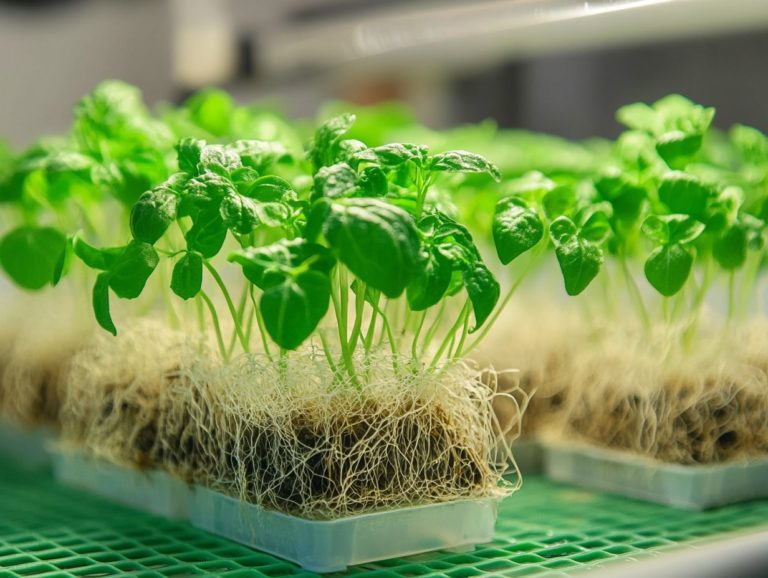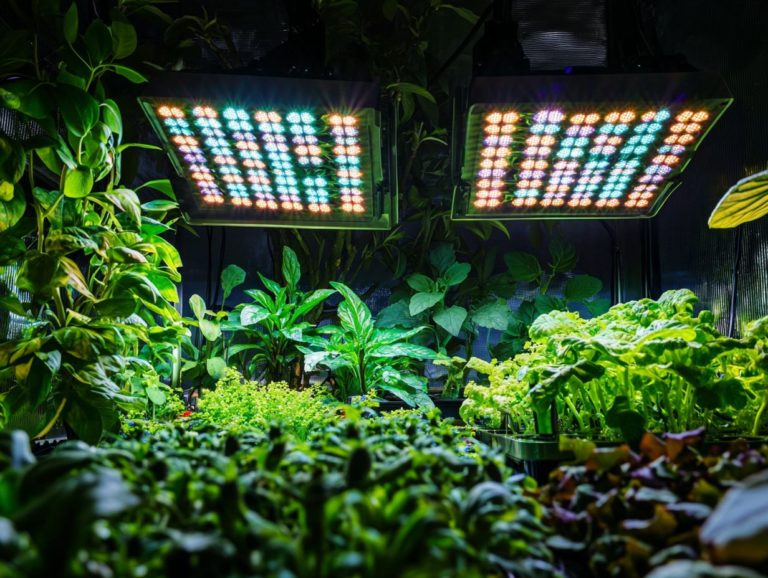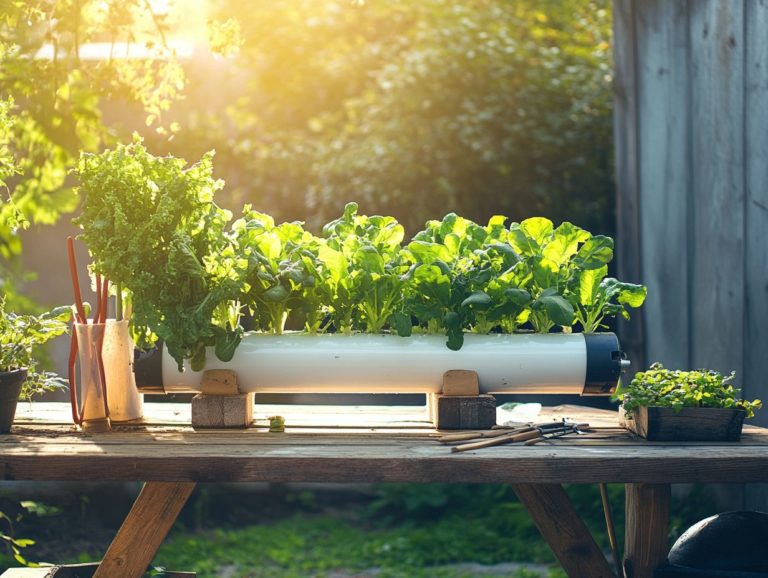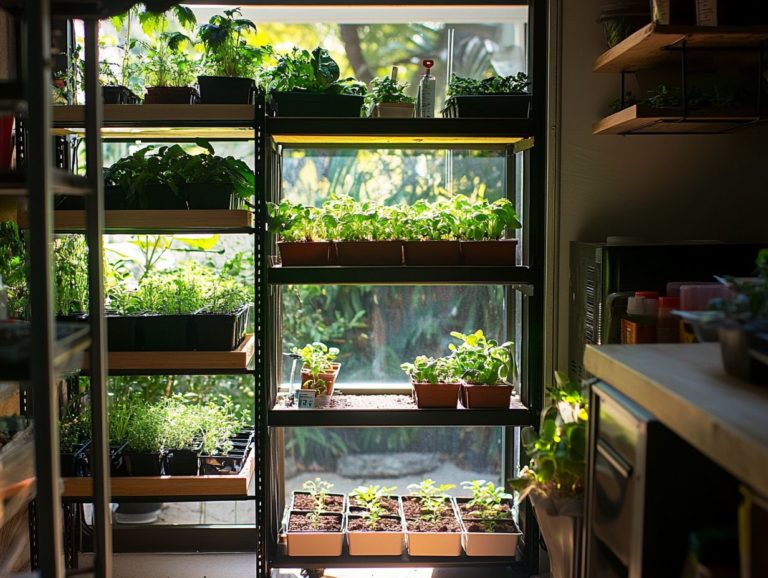How to Document Hydroponic Gardening Projects?
Hydroponic gardening offers a remarkably efficient method to cultivate plants without the need for soil. It is gaining traction among both enthusiasts and dedicated gardeners alike.
Documenting your hydroponic projects can significantly enhance your gardening experience. This practice allows you to organize your progress, share valuable insights, and refine your techniques over time.
In doing so, you create a valuable resource database that can benefit educational lessons within communities.
This article delves into the essential tools and methods for effective documentation. We will highlight key elements to include and provide tips for crafting engaging records that foster collaboration and knowledge sharing.
Regardless of whether you re just starting out or have years of experience, mastering the art of documentation can truly elevate your hydroponic journey.
Contents
- Key Takeaways:
- Benefits of Documenting Hydroponic Gardening Projects
- Tools and Techniques for Documenting
- What to Include in Documentation
- Tips for Creating Engaging and Informative Documentation
- Sharing and Utilizing Documentation
- Frequently Asked Questions
- Curious about hydroponic gardening?
- What is hydroponic gardening and why is it important to document these projects?
- What materials and equipment are needed to document a hydroponic gardening project?
- How should I organize my documentation for a hydroponic gardening project?
- What information should be included in my documentation for a hydroponic gardening project?
- Why is it important to take photos and videos while documenting a hydroponic gardening project?
- What are some tips for effectively documenting a hydroponic gardening project?
Key Takeaways:
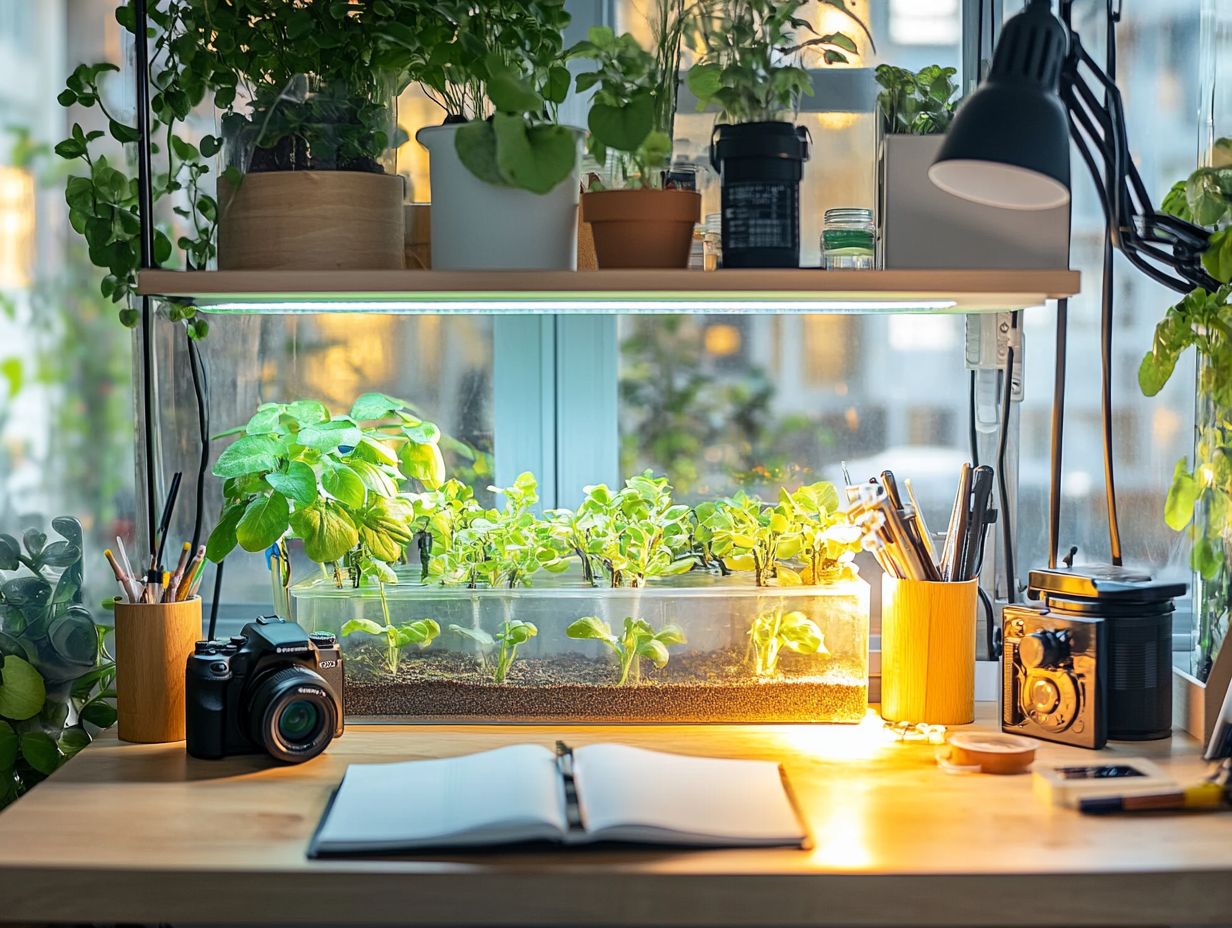
What is Hydroponic Gardening?
Hydroponic gardening presents a revolutionary way to grow plants without the need for soil. This method relies on water with added nutrients that supply essential minerals and nutrients.
This approach puts you in complete control of your plants’ growth environment. It ensures that conditions are always optimal for healthy plants.
Whether you re cultivating leafy greens like kale and lettuce or aspiring to grow more ambitious crops such as tomatoes and peppers, hydroponics serves as an eco-friendly alternative to traditional farming. It maximizes space and minimizes resource use.
Hydroponics allows you to grow plants in limited spaces. Systems like Deep Water Culture (a system where roots sit in nutrient water) and Nutrient Film Technique enable this flexibility.
The secret lies in the precise delivery of nutrient solutions, which not only supply the energy required for growth but also significantly reduce water consumption.
Eliminating soil-borne pests helps create a cleaner, more controlled environment. This means that both novice and seasoned gardeners can reap the rewards of a bountiful harvest year-round.
This showcases the many benefits of hydroponic gardening.
Benefits of Documenting Hydroponic Gardening Projects
Documenting your hydroponic gardening projects offers many benefits. One of the key advantages is creating a valuable resource database.
By systematically recording your observations and results, you can effectively track your progress. This helps you gain deeper insights into plant needs and share knowledge that elevates the entire gardening experience.
This practice fosters a culture of knowledge sharing and encourages the integration of hydroponics into farm-to-school programs. This can inspire educational lessons that engage students in hands-on learning about sustainable practices.
Start documenting your hydroponic journey today to unlock new potential in your gardening by learning how to evaluate hydroponic gardening success!
Organizing and Tracking Progress
Organizing and tracking your progress in hydroponic operations is crucial for understanding plant growth and the effectiveness of various techniques. Keeping detailed records of factors like water nutrient levels, lighting schedules, and environmental conditions, including air ventilation and water source, helps you create optimal conditions for your plants.
Utilizing specialized software or even simple spreadsheets can significantly enhance your data organization. For example, regularly monitoring pH levels and electrical conductivity offers valuable insights into nutrient absorption efficiency, helping you avoid deficiencies or toxicities.
Keeping consistent records allows you to compare different batches or techniques, giving you the power to make data-driven decisions that lead to healthier plants and higher yields. By analyzing trends over time, you can pinpoint the most effective approaches, and if you’re looking to expand your efforts, consider exploring how to fund a hydroponic gardening project and adjust your practices accordingly, setting the stage for a thriving hydroponic venture.
Sharing Knowledge and Ideas
Sharing knowledge and ideas within the hydroponics community is a spark for new ideas and encourages the exchange of successful techniques and practices. Whether through workshops, online forums, or social media, you can learn from the experiences of fellow gardeners, enhancing your understanding of plant needs and refining your systems for healthier growth.
Community events bring enthusiasts together to share insights face-to-face. Collaborating with educational institutions can elevate the conversation, offering structured learning opportunities and hands-on experiences for both beginners and experienced gardeners.
This collective learning atmosphere inspires confidence and fosters a sense of belonging within the hydroponics community through platforms like Instructables and ClickUp for sharing experiences. As members share their successes and failures, they weave a rich tapestry of knowledge that ultimately leads to more efficient practices, higher yields, and a deeper appreciation for sustainable gardening methods.
Tools and Techniques for Documenting
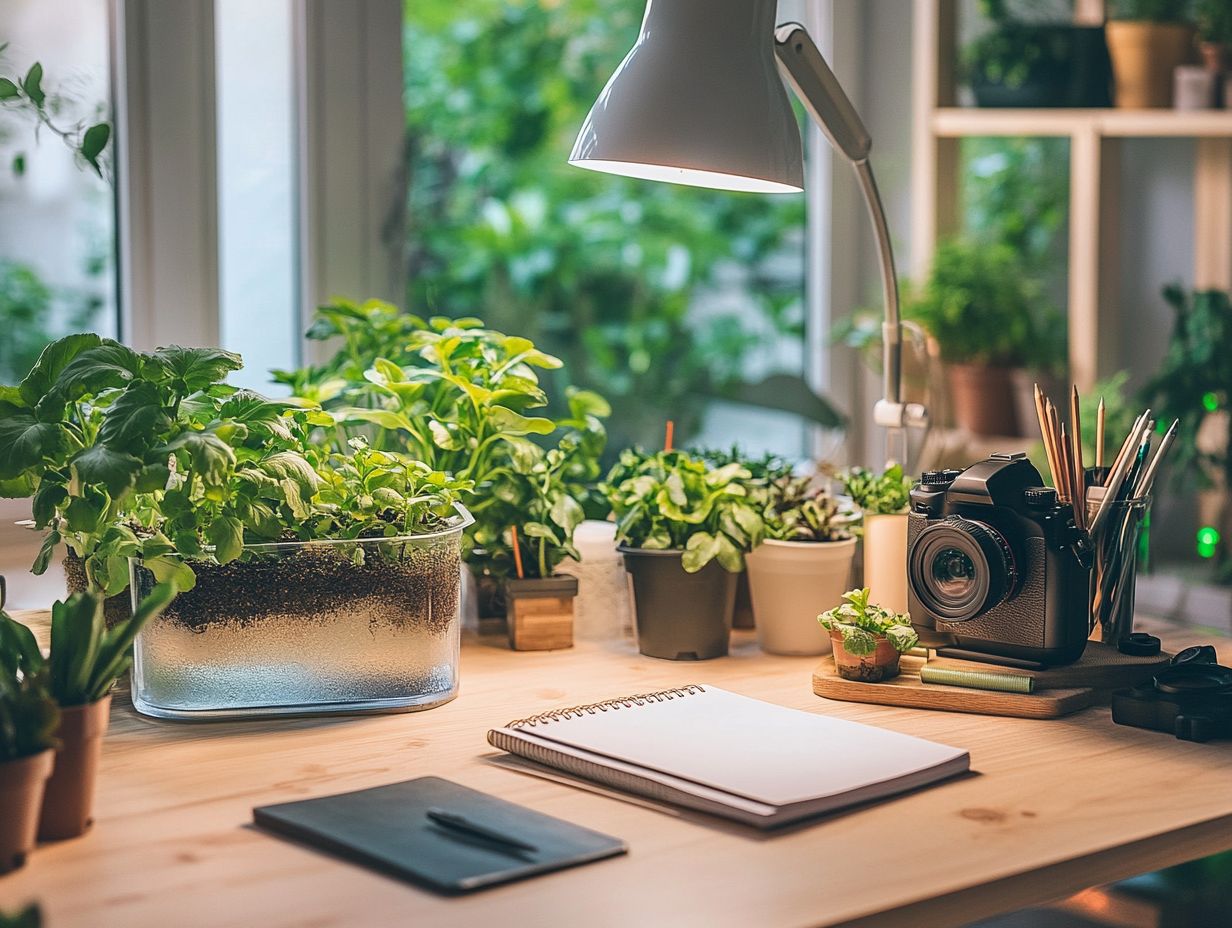
Ready to elevate your hydroponic gardening experience? The right tools and techniques can transform your approach! Utilizing automated systems or LED lights for enhanced vegetative growth can truly elevate your experience. Whether you re establishing an automated monitoring system or diving into DIY hydroponics projects, the possibilities are endless.
You have a range of options everything from mobile applications that meticulously log your plant growth data to classic notebooks for observational journaling. This abundance of choices gives you the power to select a method that perfectly aligns with your style and preferences.
Recommended Tools and Equipment
Recommended tools and equipment for hydroponics include specialized items like LED lights that promote optimal vegetative growth, seedling trays tailored for soil-less gardening, and water nutrient systems, as well as innovative options like shipping containers for urban gardening. By investing in quality equipment, you not only enhance efficiency but also significantly improve your chances of successful plant growth.
As you embark on your hydroponic journey, consider incorporating pumps, aeration systems, and even a Raspberry Pi for advanced monitoring and control. These components are crucial for oxygenating the nutrient solution, ensuring that roots receive the aeration they need for robust growth.
pH meters help you check how acidic or alkaline your water is, which is key for ensuring your plants absorb nutrients correctly. They are essential for monitoring water acidity, helping you maintain the perfect balance for optimal nutrient absorption.
When selecting equipment, think about the specific plant types you wish to cultivate, whether they are leafy greens or fruiting plants, and understand the unique requirements of different growth environments. This attention to detail can spell the difference between a flourishing garden and one that struggles.
Such a thoughtful approach paves the way for a successful hydroponic setup.
Effective Documentation Techniques
Effective documentation techniques in hydroponic gardening are essential for tracking your progress and ensuring the success of your plant growth strategies. Employing methods such as visual aids, maintaining a digital log, and regularly photographing your plants can yield invaluable insights, enhancing your gardening practices.
By implementing these documentation strategies, you deepen your understanding of the growth process. This also simplifies the task of identifying and addressing any issues that may arise. A digital log enables quick access to past growth cycles, allowing you to tailor the food your plants need and environmental conditions for optimal results.
Incorporating visual aids, like charts or graphs, can help you monitor plant health over time. Photographs provide a visual record of progress particularly useful during problem-solving sessions. For home gardeners, designating specific times each week to update logs and capture visuals can streamline this process, making documentation an integral part of your gardening journey.
What to Include in Documentation
Document your hydroponic gardening projects by capturing key elements. This includes everything from the initial setup to the final yield, ensuring alignment with Next Generation Science Standards for educational purposes. Pay careful attention to factors such as your water source, the food your plants need, the types of plants you’re cultivating, their growth stages, and the environmental conditions.
Meticulously recording these details will provide you with a comprehensive understanding of your gardening experience. This enhances your ability to refine and optimize your techniques over time, particularly when considering various zones for plant growth.
Key Elements and Information to Capture
Key elements to capture in your hydroponic documentation include thorough records of your plants’ needs, such as light requirements, nutrient levels, and growth metrics. This meticulous approach helps you optimize conditions for robust plant growth. By systematically recording these details, you empower yourself to make informed decisions that lead to better outcomes.
One vital aspect to document is the pH level of your nutrient solution, as it significantly impacts nutrient absorption and overall plant health. Tracking water temperature and humidity levels offers valuable insights into the environment your plants experience.
If you notice fluctuations in growth rates, analyzing your historical data can help identify issues related to light intensity or nutrient concentrations. Including timelines for germination and flowering stages also allows you to establish patterns and anticipate future requirements, ultimately enhancing your overall yield.
Tips for Creating Engaging and Informative Documentation
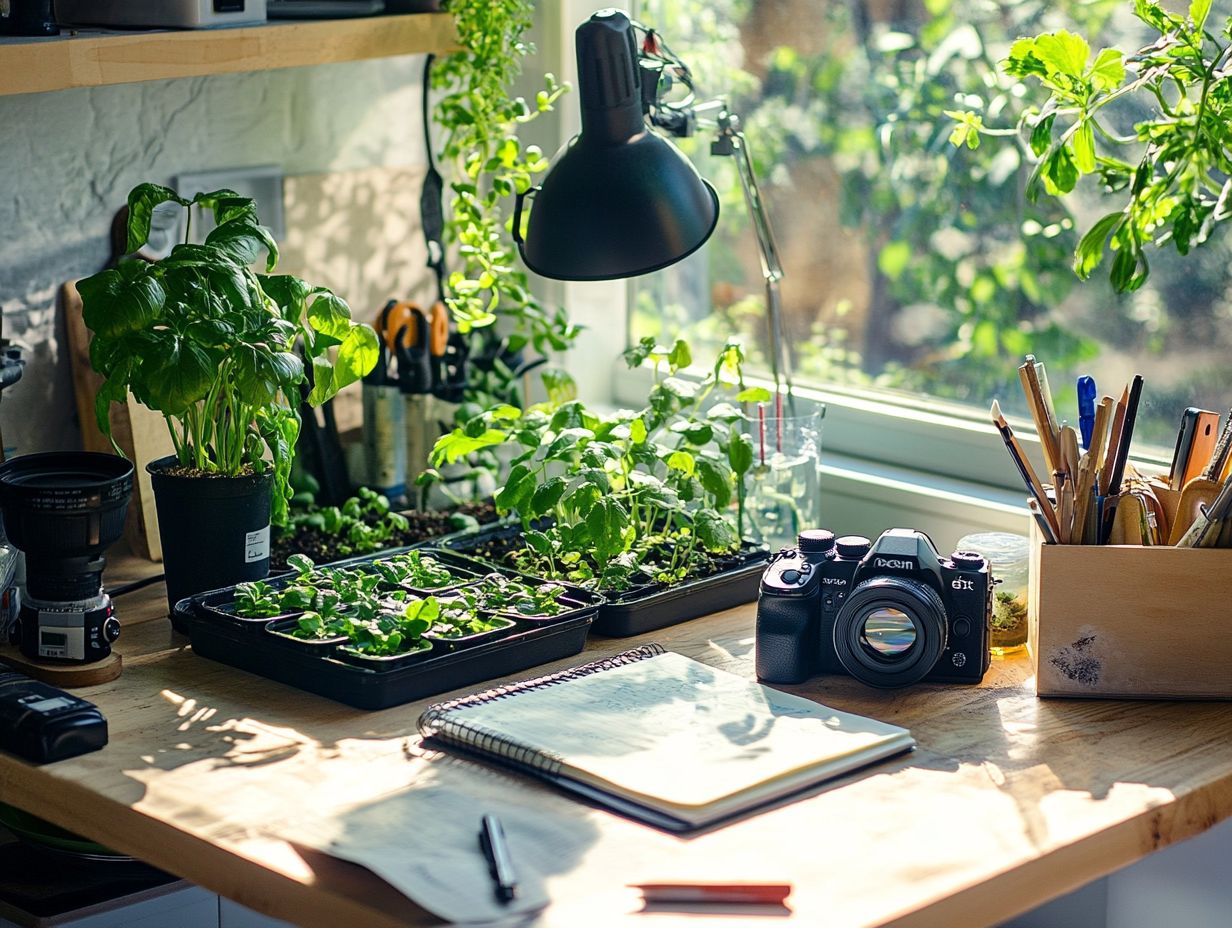
Crafting engaging and informative documentation is crucial for anyone involved in hydroponics. It enhances your personal learning journey and becomes a priceless resource for educational purposes.
Ensure your documentation is clear, visually appealing, and rich in relevant content. This empowers you to share your experiences and insights more effectively with others.
Start documenting your hydroponic journey now and watch your plants thrive!
How to Make Your Documentation Stand Out
To elevate your documentation in the hydroponics arena, think about weaving in distinctive elements that boost both educational value and visual allure. By incorporating charts, infographics, and even multimedia features, you can transform ordinary documentation into a captivating and informative resource.
Using visually engaging tools like Canva for graphic design or Prezi for dynamic presentations helps convey complex ideas in a way that feels accessible and inviting. Adding interactive elements, such as videos from platforms like YouTube, can vividly demonstrate techniques and best practices, making the learning experience far more engaging.
Unleash your creativity with tools like Miro or Lucidchart for mind mapping to clarify processes and methodologies. This enables users to grasp complex ideas with ease. Ultimately, marrying creativity with clear, concise language will keep your audience both intrigued and well-informed.
Sharing and Utilizing Documentation
Utilizing and sharing documentation effectively can significantly enhance collaboration and shared knowledge within the hydroponics community. By making resources accessible across diverse platforms be it social media, blogs, or educational institutions you can amplify the reach and impact of the knowledge you share, benefiting not just yourself but the entire gardening community.
You have a multitude of avenues to share and collaborate on hydroponic projects, ranging from social media platforms to community workshops and resource databases that enable knowledge exchange. Engaging with others allows you to contribute to a shared understanding of hydroponics while reaping the benefits of diverse experiences and insights.
Online platforms like Reddit and Facebook groups, specifically tailored for hydroponics, serve as vibrant spaces where enthusiasts discuss techniques, troubleshoot challenges, and inspire one another with fresh ideas. Local cooperatives and urban farming initiatives often host workshops that provide hands-on learning experiences, deepening your understanding and skills.
Participating in these community-driven events not only enhances your individual knowledge but also fosters innovative practices as members share their successes and challenges. Through this collaborative spirit, refine your methods and nurture a stronger sense of community, ultimately paving the way for a more sustainable future in hydroponic agriculture.
Frequently Asked Questions
Curious about hydroponic gardening?
What is hydroponic gardening and why is it important to document these projects?
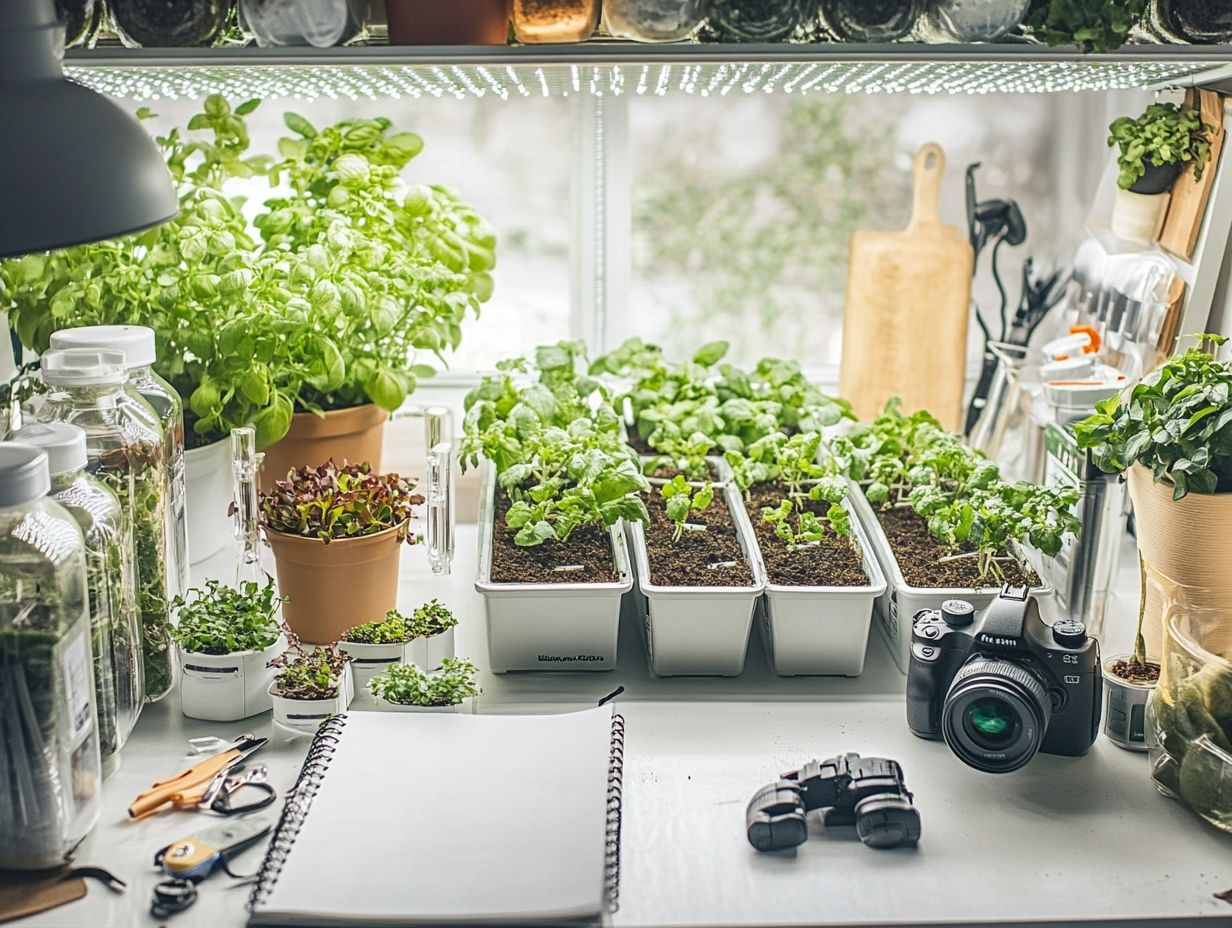
Hydroponic gardening is a method of growing plants without soil, using a nutrient-rich water solution instead. Documenting hydroponic gardening projects is important because it allows for accurate record keeping and analysis of results, which can lead to improvements and increased success in future projects.
What materials and equipment are needed to document a hydroponic gardening project?
To document a hydroponic gardening project, you will need a notebook or digital document, a camera, measuring tools, and any other materials specific to your project, such as pH testers or nutrient solutions.
How should I organize my documentation for a hydroponic gardening project?
It is important to have a clear and organized system for recording your hydroponic gardening project. This can include labeling and dating each entry, using charts or diagrams to track progress, and keeping all documentation in a designated folder or digital file.
What information should be included in my documentation for a hydroponic gardening project?
Your documentation should include details about the type of plants being grown, the nutrient solution being used, the setup of the system, measurements and observations, and any changes or adjustments made during the project.
Why is it important to take photos and videos while documenting a hydroponic gardening project?
Visual documentation through photos and videos can provide valuable information that may not be captured in written records. This includes changes in plant growth over time, unexpected challenges or successes, and overall progress of the project.
What are some tips for effectively documenting a hydroponic gardening project?
Don’t miss out on documenting your hydroponic journey! Here are easy tips to get you started.
Be consistent and thorough in your recordings.
Regularly review your data and seek advice from experienced gardeners.

